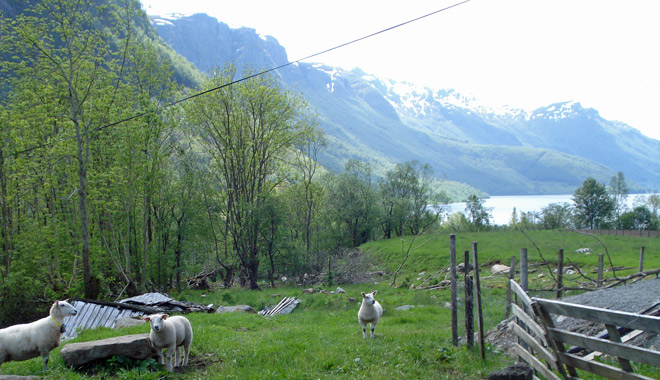Endogamous populations are much harder to work with in genetic genealogy because you have double and triple 6th cousins who look like 2nd to 3rd cousins when you compare their DNA to yours. Ashkenazim (see my Ashkenazi DNA post), Mennonites (see Tim Jantzen’s project), and Polynesians (See Kalani Mondoy”s project) are a few of these intermarried groups. See the ISOGG wiki for a further discussion of endogamy.
A fellow genetic genealogist, Israel Pickhotz, has written a fascinating book about how he has confirmed and refuted many genealogical connections in his extended Ashkenazi family. He did this by testing every cousin he could. That story is an inspiration to those of us frustrated by using DNA to research our jewish roots. It is as easy to read as it can be, given that genetic genealogy is not easy to understand. Lara, blogging at her blog Lara’s Family Search, wrote an excellent description of the book in her review which is hard to improve upon.
Israel’s blog continues his story: http://allmyforeparents.blogspot.com/
Another DNA expert, Jim Bartlett has just written an interesting blog post investigating the math of endogamy at his segmentology blog. As it is titled part I, I am looking forward to part II.
The problem comes when so many cousins marry each other as you go back up the tree that it gets difficult to calculate the shared DNA. Plus once you get past 3rd cousins, DNA inheritance becomes more and more random anyway.
On my Norwegian side, my Dad has a woman “MB” listed as a 2nd to 3rd cousin who upon investigation was found to be a fifth cousin three times and a sixth another time. She shares 49 cM over 4 segments with my Dad and a whopping 141 cM in 8 segments with my third cousin in Norway. That third cousin is related the same way to MB as we are, but he, like MB, descends from a cousin marriage within this group.
MB’s grandson and I worked on the relationship. Recently he found yet another way we are related. Here is what he told me recently.
“As it turns out, Grandma “Sande” (MB) is descended from Rasmus twice (because her parents are first cousins) but also from his brother Sakarias. So, we’re cousins through Nils Erikson Frette and his wife three ways. And cousins through Hallvard and Anna two ways because of the pedigree collapse. So that’s actually five cousin relationships on the Sande line.
The additional relationship I was referring to is on the Thompson line. (Grandma Sande’s mother). Her ancestors are about half from Skanevik and half from Rogaland.
So altogether that’s six cousin relationships!
Since I have so many Etne cousins who have tested perhaps I can better sort out which DNA comes from those Frette and Tveito farm ancestors. This will take a lot of work; perhaps after the holidays.
Another problem is how to represent the multiple ancestors in a tree much less their shared DNA. I will study Israel’s book some more for inspiration and try to make a picture of this confusing relationship in a future post.


There’s an interesting article by Jaco Greeff called “Deconstructing Jaco” about how his Afrikaner ancestors appear multiple times in his pedigree. It is accompanied by a GEDCOM utility to calculate how much of your DNA comes from a particular ancestor:
http://www3.interscience.wiley.com/journal/117956739/abstract
The above link was broken at the time of this post, but the article has been uploaded elsewhere:
http://www.nslc.wustl.edu/courses/Bio3501/zarchives/2007/Greeff.pdf
The GEDCOM utility can be found on the author’s website:
http://www.bi.up.ac.za/software/Deconstructp.zip
thanks Ann
I haven’t seen it mentioned, but does colonial American ancestry have the same problem with endogamy? With the small population at the time, it seems there were many multiple relationships
Bonnie,
I started the Palatine DNA Project almost 10 years ago to study that population that migrated from Germany to New York in 1710 — some 850 families. I was actually surprised at the lack of interrelatdness, since virtually all came from the Palatinate and nearby. I’m no longer associated with it, but I hoped it would serve as a database for some future study.
Doris
Yes absolutely colonial Americans can also be endogamous but I do not know of anyone studying it in detail although Roberta Estes’ blog has some posts that are relevant and there are probably some projects at ftDNA.
High levels of endogamy can certainly make genetic genealogy difficult. Inevitably everyone has a little due to pedigree collapse, way back. The trick in being in a population that is not usually thought of as endogamous is to realise that there probably was some. As Maurice Gleeson has pointed out in a recent presentation, where would one find endogamy but in a small village?
Similar to the Palatinate, several ships of Old Lutherans came to Australia around 1840. So far, their paper records after arrival show many marriages within people on a ship, particularly as those people tended to settle within the same area. But very few apparent marriages between close cousins. The trick is that there may have been close relationships back in the old country, but some of the critical records are not easily accessible. If they exist at all, as the authorities effectively out-lawed some families for a decade or so before they sailed, and some births and marriages may not have been recorded. So it can be hard to know who were cousins when they embarked.
What I have found in the new land is 2 brothers marrying 2 sisters, or less often brother-sister marrying sister-brother. Or step-siblings marrying siblings. And that can certainly tangle trees.
Lovely Norwegian landscape photo! Your family and mine have some connections, but as they aren’t huge and there is of course endogamy, I’m being slow about pursuing them although I believe my second cousin has been in touch with you.
Hi. Do you have a list of endogamy resources that you can share?